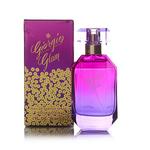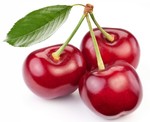Hermes Eau d'Orange Verte (1979), Eau de Pamplemousse Rose, Eau de Gentiane Blanche (2009) {Perfume Reviews}
 Hermès launched this spring and summer a set of three eaux de cologne. As the summer is heating up to the drum of the dog days, I thought that it was high time to review these descendants of Kölnisch Wasser.
Hermès launched this spring and summer a set of three eaux de cologne. As the summer is heating up to the drum of the dog days, I thought that it was high time to review these descendants of Kölnisch Wasser.Eau d' Orange Verte (1979)
Notes: orange, lemon, mandarin, buchu, blackcurrant bud, mint, oakmoss, patchouli.
This by now iconic eau de cologne was created by perfumer Françoise Caron in 1979. It was reportedlly originally inspired by the vision of a wet undergrowth covered by morning dew. When it came out there had already been the justifiably famed Eau de Roche/Eau de Rochas authored by Nicolas Mamounas in 1970. Caron brought a decorative, furnishing spirit to this feeling of a fresh, crisp, light oakmossy eau de cologne with her orange grove motif and her insistence on the sensation of bitterness. Fresh could be slightly startling, even spectacular if one paid attention to the chiseling out of the citrus accord, and not just refreshing.
The cologne opens on a bitter orange and mint leaves accord with an undercurrent of softer, fruitier citrus notes and a foresty dryness. The buchu echoes the tartness and fruitiness of the blackcurrant bud note which itself adds to the muskiness of the composition. The scent while keeping its bitter edge becomes softer and more pungent at the same time as the musky facet of blackcurrant releases its sweaty note. The scent is dual, oscillating between a clean, fresh-river like facet and a more dirty animalic one, like a shirt marked with light sweat left on the same river bank as its proprietor took a dip in the water...

Eau de Pamplemousse Rose (2009)
Notes: grapefruit, orange, rhubofix, rose, vetiver.
Eau de Pamplemousse Rose is named after a play of word on the pink grapefruit varietal but in fact refers to an association of grapefruit with a natural rose note. The rose we are told was used to create the effect of a luminous veil.
The cologne opens on both a very juicy and dry grapefruit accord going in the direction of a pomelo followed by a softer green and woody impression like an undercurrent that is more abstract. The aromachemical Rhubofix is mentioned; it is made by Firmenich and described as smelling very fresh, with woody, spicy, floral and fruity overtones.The progression makes it go in the direction of a skin scent with herbal-y accents.The skin effect seems to rest on a light velvety treatment of the skin note found in iris.
The drydown typifies the scent as a traditional dry, slightly medicinal eau de cologne with the added expected contemporary stripped-down personality that is now the manner of Jean-Claude Ellena, the Hermès in-house perfumer. The vetiver at this stage, with its round, burnt-tire nuance, appears like a quote of the treatment it receives in Habanita by Molinard. The rose seems to be felt better from a distance in the sillage of the perfume rather than up-close. It is a rose that is not very sweet, crisp, with a green and crunchy orientation. The composition tends to be fleeting although the finish line is discreetly lasting, with an agreeable rhubarb-like tartness. The longer drydown is a combination of citrus and ambrette seed, the latter with light musky and fruity facets.
I find in this cologne the same kind of figurative-abstract dynamic as found in Brin de Réglisse: a very real yet composite grapefruit/pomelo motif offering a well-defined contour on a background that is more about color and trace.
Jean-Claude Ellena considers Eau de Pamplemousse Rose a pleasant composition, one that was designed to be immediately attractive.
 Eau de Gentiane Blanche (2009)
Eau de Gentiane Blanche (2009)Notes: gentian, white musk, incense, iris.
The French language has a specific term for designating unpleasant odors emanating from plants, sometimes poisonous ones: vireux. It comes from the Latin virosus which means that something has a fetid, disgusting smell. It is a term that is often applied to gentian in botanical sources, especially the yellow gentian. There are different species of gentian and the reference to a white gentian which exists in reality may only be metaphorical here as in an allusion to the white musks in the composition. Jean-Claude Ellena considers Eau de Gentiane Blanche to be a study on white musk a fact which may come across as paradoxical given the banality of white musks and the more unusual gentian note. How to reconcilie an easy note with a more challenging one and create a convincing harmony can be seen as a motivation here.
The scent opens with a very interesting red pimento, Capsicum Chinensis chile accord mixing with some white-greyish gentian. The eau de cologne presents an oriental facet that is warm and balmy softened by ambrette seed and iris to feel almost like a chamois skin. The brusquerie of the opening is followed by a softening but the scent remains bold in essence thanks to the aridity of the gentian. Some green, sappy nuances freshen up this hot concoction which manages to make you think of dessicated Mexican chiles although this accord might be here just for the acrid effect often reported about gentian.
The drydown marks the personality of this eau as a dry eau de cologne more than a fresh one. I would like to insist on this distinction as I see it as a meaningful one and a revisit and variation of the bitterness of Eau d'Orange Verte. The oriental facet which was a bit unexpected includes a tonka note which makes me see this fragrance as yet another study on vanilla by Jean-Claude Ellena as if to explore the boundaries of fresh and warm, dry and sensual by mastering the art of the economical vanilla. The deliberate touch of unconventional exoticism evokes Paprika Brasil. Of the three colognes it is the one that resembles most the Hermessence collection for its spirit of research and target audience: the connoisseur.
If one might be tempted to draw a comparison with Aqua Allegoria Gentiana by Guerlain (2001) now discontinued due to the rarity of a gentian focus in fine perfumery, the comparison has to stop here. Apart from a common interest for that family of plants, the blue gentian in the case of Guerlain, the two perfumes have nothing in common except for an oriental personality and a citrus note. On the other hand if you really liked Venezia by Laura Biagiotti, Gentiana is a Venezia type.
In my experience of summer heat, I find that dryness is something I crave even more than freshness to counteract the slightly neauseous feeling of overheat. As I was trying on several eaux-de-cologne-inspired scents the other day I could not find one that was dry enough to my taste but Eau de Gentiane Blanche offers that therapeutic quality. A little bit of dryness can help restore sanity during the dog days which were thought to be that dangerous period "when the seas boiled, wine turned sour, dogs grew mad, and all creatures became languid, causing to man burning fevers, hysterics, and phrensies."









